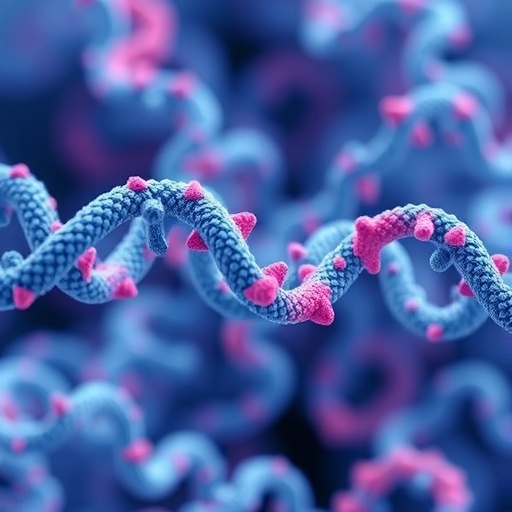Nucleic acids, comprising DNA and RNA, are more than mere carriers of genetic information. These molecules are critical players in the orchestration of life, where their linear sequences of nucleotides contribute to the vast complexity of biological functions. The emergence of single-stranded nucleic acids has paved the way for novel structural formations dictated by the principles of complementary base pairing. This self-assembly leads to diverse secondary structures, which further evolve into intricate three-dimensional conformations, yielding specific functional sites essential for a plethora of biological interactions. Among these advancements is the development of functional nucleic acids (FNAs), which have transformed our understanding of molecular biology and precision medicine.
These FNAs are not just passive components in the genetic landscape; they actively engage with biomolecules, facilitating a myriad of biological functions that extend far beyond traditional genetic coding. One notable feature of FNAs is their ability to act as catalysts, demonstrating enzymatic functions that were once thought exclusive to proteins. This catalytic property has rendered FNAs as powerful tools in biotechnology, where they are utilized to promote specific reactions in a controlled manner, enhancing our capabilities in molecular manipulation.
Moreover, FNAs serve as biosensors, providing us with the essential ability to detect and quantify biomolecules in a variety of settings. Their sensitivity and specificity make them ideal candidates for early disease diagnostics and real-time monitoring of biological processes. This application of FNAs is not merely theoretical; many research teams are actively developing prototypes for clinical use, aiming to enhance patient outcomes through precision diagnostics. Their versatility also extends to functioning as modulators of cellular processes, allowing the fine-tuning of gene expression and the modulation of pathways critical for health and disease.
As the landscape of biomedical innovation progresses, engineering strategies for FNAs are gaining momentum, with researchers focusing on optimizing their stability, affinity, and catalytic efficiency. Advanced structural modifications can enhance the resilience of FNAs against degradation, a crucial factor for their implementation in therapeutic contexts. The optimization of binding affinities not only guarantees specificity in biomolecular interactions but also improves the efficacy of FNAs in their functions as therapeutic agents. To this end, the advent of high-throughput screening methods opens up new avenues for the discovery of FNAs with desired characteristics.
Key examples of FNAs include aptamers and DNAzymes. Aptamers, which are short, single-stranded oligonucleotides, show exceptional binding affinity and specificity toward their target molecules—be it proteins, small molecules, or even entire cells. This characteristic positions aptamers as ideal candidates for developing targeted therapeutic strategies. DNAzymes, on the other hand, are ribonucleic acid molecules capable of catalyzing specific biochemical reactions, comparable to their protein counterparts. The intrinsic catalytic properties of DNAzymes present numerous applications ranging from drug development to environmental sensing.
The potential of FNAs has also prompted a surge in clinical trials, providing real-world insights into their efficacy and safety profiles. These trials are essential for validating the practical applications of FNAs in therapeutic settings, where they can be employed for treating a variety of diseases, including cancer, infectious diseases, and genetic disorders. The promise of FNAs as modulators of biological functions is continuously being explored, paving the way for novel treatment modalities that capitalize on their unique properties.
Despite their potential, the path to integrating FNAs into standard therapeutic practice is not without challenges. Issues related to in vivo stability, delivery mechanisms, and potential off-target effects are critical considerations that researchers must address. The quest for optimal delivery systems is particularly paramount; since FNAs must reach their intended targets within a complex and dynamic biological environment, effective delivery solutions are integral to the success of their therapeutic applications.
The prospects of FNAs in precision medicine are undeniably expansive. As our understanding of cellular and molecular dynamics deepens, FNAs are poised to become integral components of targeted therapies and advanced diagnostic frameworks. The ability to precisely target and manipulate molecular pathways has the potential to revolutionize treatment options for various conditions, making FNAs valuable tools in the arsenal of modern medicine.
In conclusion, the bioengineering of functional nucleic acids represents a seismic shift in the fields of molecular biology and precision medicine. Their unique properties—coupled with ongoing advancements in production methodologies and engineering strategies—position FNAs at the forefront of biomedical innovation. As we harness their transformative powers, the future of FNAs promises to unlock complex challenges, paving the way for newfound therapies and diagnostic breakthroughs that could redefine our approach to health and disease management. It is, without a doubt, an exhilarating time to witness the unfolding potential of FNAs.
Subject of Research: Functional Nucleic Acids in Molecular Biology and Precision Medicine
Article Title: Molecular bioengineering of functional nucleic acids
Article References:
Du, Z., Wu, X., Dang, Y. et al. Molecular bioengineering of functional nucleic acids. Nat Rev Bioeng (2025). https://doi.org/10.1038/s44222-025-00361-y
Image Credits: AI Generated
DOI:
Keywords: Functional nucleic acids, aptamers, DNAzymes, precision medicine, molecular biology, bioengineering, catalytic agents, biosensors, therapeutic agents, diagnostics.
Tags: biological interactions of nucleic acidsbiosensors in biotechnologycatalytic properties of nucleic acidsDNA and RNA functionsenzymatic functions of FNAsfunctional nucleic acidsinnovative biotechnology toolsmolecular biology advancementsprecision medicine applicationsself-assembly of nucleic acidssingle-stranded nucleic acidsthree-dimensional nucleic acid structures





